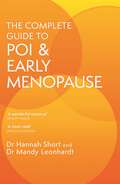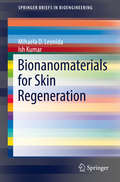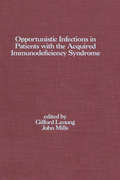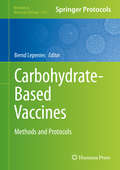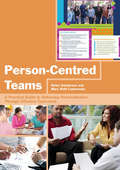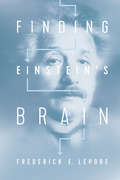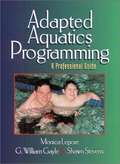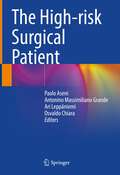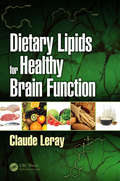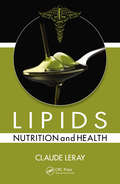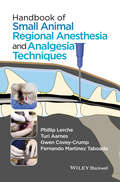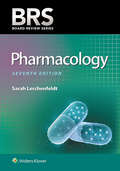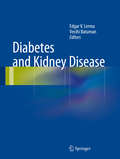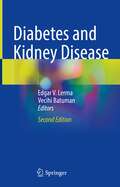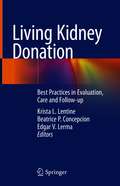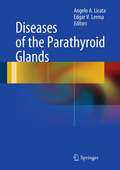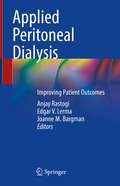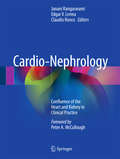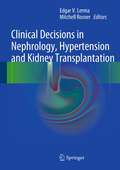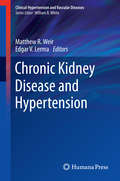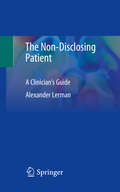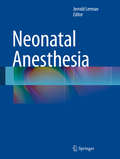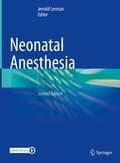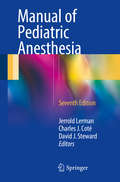- Table View
- List View
The Complete Guide to POI and Early Menopause
by Dr Mandy Leonhardt Dr Hannah ShortSupport for every stage of your journey through early menopause and Premature Ovarian Insufficiency.Finding out in your teenage years or early twenties that you are menopausal can be devastating; receiving the same diagnosis in your late thirties is overwhelming; learning that you are post-menopausal while undergoing fertility treatment in your early forties may leave you blind-sided. This is not the more natural, expected hormonal transition at mid-life that other, older women experience. The Complete Guide to POI and Early Menopause offers a road-map to navigating the emotional and hormonal rollercoaster that accompanies these diagnoses. Drawing on their own experiences and their clinical expertise, the authors bring together the latest research, insights and the voices of women themselves with a whole-body approach that prioritizes empowerment and health.It covers:- Causes of early menopause and POI- When, and how, to seek a diagnosis- Medical and surgical menopause- Hormonal and non-hormonal treatments- Nutrition, Lifestyle & Self-care- Fertility - Sexual wellbeing, relationships and self-identity- Early menopause, education and workInclusive, compassionate, and featuring FAQs, guidelines and further resources, this book is the only one you will ever need if you are facing the unique challenges of menopause and POI at a stage of life when you least expected it.
Bionanomaterials for Skin Regeneration (SpringerBriefs in Bioengineering)
by Mihaela D. D. Leonida Ish KumarThis book gives a concise overview of bionanomaterials with applications for skin regeneration. The advantages and challenges of nanoscale materials are covered in detail, giving a basic view of the skin structure and conditions that require transdermal or topical applications. Medical applications, such as wound healing, care for burns, skin disease, and cosmetic care, such as aging of the skin and photodamage, and how they benefit from bionanomaterials, are described in detail. A final chapter is devoted to the ethical and social issues related to the use of bionanomaterials for skin regeneration. This is an ideal book for researchers in materials science, medical scientists specialized in dermatology, and cosmetic chemists working in formulations. It can also serve as a reference for nanotechnologists, dermatologists, microbiologists, engineers, and polymer chemists, as well as students studying in these fields.
Opportunistic Infections in Patients with the Acquired Immunodeficiency Syndrome
by Gifford Leoung John MillsThis book provides an overview of background information on the epidemiology, biology, and pathophysiology of HIV infection. It presents the spectrum of HIV disease from acute infection to specific syndrome. The book reviews the management of specific opportunistic infections.
Carbohydrate-Based Vaccines: Methods and Protocols (Methods in Molecular Biology #1331)
by Bernd LepeniesThis volume summarizes current cutting-edge methods related to carbohydrate-based vaccines, from the identification of a suitable carbohydrate antigen via the preparation of glycoconjugate vaccines to the characterization of vaccine candidates for their use in pre-clinical and clinical studies. Written in the highly successful Methods in Molecular Biology series format, chapters include introductions to their respective topics, lists of the necessary materials and reagents, step-by-step, readily reproducible laboratory protocols, and key tips on troubleshooting and avoiding known pitfalls. Authoritative and practical, Carbohydrate-Based Vaccines: Methods and Protocols aims to be a valuable manual that will facilitate research in the field of carbohydrate-based vaccines.
Person-Centred Teams: A Practical Guide to Delivering Personalisation Through Effective Team-work
by Mary Beth Lepkowsky Helen SandersonPerson-Centred Teams provides much-needed guidance on person-centred working following the roll out of personalisation and personal budgets across health and social care. In order to deliver personalisation you need to work with staff in person-centred ways. Straightforward and easy-to-read, this practical guide describes how to do this by developing a person-centred team using person-centred practices. The authors outline their model for developing a team, and how information is recorded in a person-centred team plan. They explain: Purpose - how to clarify a team's purpose People - what managers need to know about each team member, and how one-page profiles can help Performance - how to clarify service users' expectations of a team's services, and assess whether or not these are being met Process - how person-centred practices can aid teamwork and help your team deliver Progress - how to continuously improve teamwork and performance Each section features clear illustrations and examples from teams to enable you to develop a person-centred team plan and work together in person-centred ways. This guide is essential reading for service providers, managers, practitioners and students in the health and social care fields, as well as person-centred planning coordinators and user-led organisations.
Finding Einstein's Brain
by Dr Frederick E. LeporeAlbert Einstein remains the quintessential icon of modern genius. Like Newton and many others, his seminal work in physics includes the General Theory of Relativity, the Absolute Nature of Light, and perhaps the most famous equation of all time: E=mc2. Following his death in 1955, Einstein’s brain was removed and preserved, but has never been fully or systematically studied. In fact, the sections are not even all in one place, and some are mysteriously unaccounted for! In this compelling tale, Frederick E. Lepore delves into the strange, elusive afterlife of Einstein’s brain, the controversy surrounding its use, and what its study represents for brain and/or intelligence studies. Carefully reacting to the skepticism of 21st century neuroscience, Lepore more broadly examines the philosophical, medical, and scientific implications of brain-examination. Is the brain simply a computer? If so, how close are we to artificially creating a human brain? Could scientists create a second Einstein? This “biography of a brain” attempts to answer these questions, exploring what made Einstein’s brain anatomy exceptional, and how “found” photographs--discovered more than a half a century after his death--may begin to uncover the nature of genius.
Adapted Aquatics Programming: A Professional Guide
by Monica Lepore G. William Gayle Shawn StevensThis text for aquatics instructors covers the various philosophies and issues relating to adapted aquatics programs; offers detailed information on skills and resources for adapted aquatics personnel; and discusses program enhancement, including model programs and how to modify fitness activities for participants with disabilities. Annotation c. Book News, Inc. , Portland, OR (booknews. com)
The High-risk Surgical Patient
by Ari Leppäniemi Paolo Aseni Osvaldo Chiara Antonino Massimiliano GrandeIt is well known that certain diseases and patient conditions are associated with increased perioperative risk. The aim of this book is to define and identify the clinical factors that warrant a broader and more detailed assessment of pre-operative surgical risk in difficult and unusual clinical settings. One of the sections is dedicated to the main pathway of peri- and post-surgical critical care based on the patient-specific deterioration risk and associated diseases; here, a panel of selected experts describes the correct patient-oriented pathways for complex or unscheduled surgical operations in order to reduce the operative risk. In addition, the book describes the latest trends in minimally invasive surgical techniques that are associated with peri- and post-operative risk reduction, and provides an overview of recent advances in surgical simulation, focusing on perspectives in surgical research to increase patient safety.Guidance is also provided on extracorporeal membrane oxygenation (ECMO), Left Ventricular Assist Devices (LVADs), and their management in patients requiring emergency surgery. The book will help surgical trainees recognize cases with the highest surgical risk and identify the most common complications at an early stage.
Treatment in Dermatology
by Barbara LeppardMany family doctors lack confidence in their treatment of skin disorders. However, once the basic principles are understood a rational approach can lead to the appropriate therapy. In this companion volume to the widely-used Differential Diagnosis in Dermatology, the same authors present a clear, logical and visual guide through the options. It offers specific advice on management of each condition, when to use ointments or creams, how much to prescribe, what active constituents should be used, what to tell patients and what to do if treatment fails or patients return. The information contained in these two volumes provide a comprehensive reference to the diagnosis and treatment of all but the rare and esoteric, and will lead to greatly improved patient care.
Dietary Lipids for Healthy Brain Function
by Claude LerayOur brain is recognized by all specialists as the most complex entity created in nature. Regarding the extraordinary capacities of its functioning, still incompletely known, the control of the brain by our dietary lipids may seem very improbable to many people. Yet, research has shown that an imbalance in the intake of essential fatty acids is related to conditions as prevalent as depression, bipolar disorder and schizophrenia. Research on psychological disorders including attention deficit hyperactivity disorder, autism, aggressiveness and suicidal behavior are discussed in this text. Several neurodegenerative diseases, such as Alzheimer's, Parkinson's and multiple sclerosis are also explored. Several observations prove that not only are omega-3 fatty acids actively involved in maintaining the noble functions of our brain, but other lipids, including cholesterol, liposoluble vitamins (A, D and E) and some carotenoids play roles as well and are presented in this book. Dietary Lipids for Healthy Brain Function focuses on this important research for human health. This book brings readers, doctors, dietitians and nutritionists arguments that could improve brain development in young people, prevent many nervous diseases and slow down the age-related decline of higher brain functions. This book provides helpful information to improve health in the young as well in the old, using practical and personalized recommendations for preventing and treating nervous pathologies. Features: • Focuses on the importance of dietary lipids on the proper brain functioning. • Provides relevant references demonstrating the efficiency of dietary lipids to maintain a healthy brain. • Introduces lipid sources and describes their roles by lipid groups in behavior issues and various chronic nervous diseases.
Lipids: Nutrition and Health
by Claude LerayThe role of lipids in nutrition science has evolved considerably in the past decade with new concepts following new discoveries. Lipids: Nutrition and Health reviews the role of dietary lipids in maintaining health, bringing the latest knowledge from a myriad of sources into one convenient resource. Taking a combined approach that integrates lipid
Handbook of Small Animal Regional Anesthesia and Analgesia Techniques
by Phillip Lerche Turi Aarnes Fernando Martinez Taboada Gwen Covey-CrumpThis is a concise visual guide to the major techniques of regional anesthesia and analgesia for small animal practitioners, with complete coverage of the relevant physics, physiology, and pharmacology. Provides straightforward advice and easy-to-implement strategies for general veterinary practitioners without specialist training who want to incorporate regional anesthesia into their practice Features an accessible design with plenty of diagrams and photos and a convenient and robust spiral-bound format that lays flat for use during procedures Broken into sections which explain techniques by limb or body part and by species Details important anatomy (nerves, bones, and vessels), as well as possible side effects and complications
BRS Pharmacology (Board Review Series)
by Sarah Lerchenfeldt Gary RosenfieldBRS Pharmacology, Seventh Edition, equips medical, dental, and other health professions students with the preparation needed to excel on licensing examinations and confidently transition to healthcare practice. The popular BRS series format presents concise coverage of the general principles of drug mechanisms and detailed descriptions of how drugs act on major body systems, delivering vital information in a succinct, streamlined approach favored by today’s students. This trusted review also familiarizes students with the pharmacologic principles of toxicology and details essential information on drugs used to treat anemia, disorders of hemostasis, infectious diseases, and cancer. Updated with powerful mnemonics and vibrant illustrations, the seventh edition strengthens students’ retention and reinforces challenging concepts to help students ensure success from the USMLE to clinical practice.
Diabetes and Kidney Disease
by Edgar V. Lerma Vecihi BatumanDiabetes and Kidney Disease reviews the most up-to-date research on diabetic nephropathy, the current understanding of its pathophysiology, renal structural alterations and clinical features and summarizes recent evidence-based clinical treatment modalities for the prevention and management of diabetic kidney disease General clinical aspects are covered, as well as an overview to the novel approaches being designed by leading researchers in the field. A convenient compendium for physicians involved in the care of diabetic patients with varying degrees of kidney involvement, Diabetes and Kidney Disease is also a handy resource for medical residents and students interested in the current status and future approaches to reducing the burden of diabetes and diabetic kidney disease.
Diabetes and Kidney Disease
by Edgar V. Lerma Vecihi BatumanThis book provides a concise yet comprehensive resource on Diabetic Kidney Disease. Similar to the previous edition, the book reviews the most up-to-date research on diabetic nephropathy, the current understanding of its pathophysiology, renal structural alterations and clinical features, and summarizes recent evidence-based clinical treatment modalities for the prevention and management of diabetic kidney disease. General clinical aspects are also covered, as well as an overview to the novel approaches being designed by leading researchers in the field.A convenient compendium for physicians involved in the care of diabetic patients with varying degrees of kidney involvement, Diabetes and Kidney Disease, 2e is also a handy resource for medical residents and students interested in the current status and future approaches to reducing the burden of diabetes and diabetic kidney disease.
Living Kidney Donation: Best Practices in Evaluation, Care and Follow-up
by Edgar V. Lerma Krista L. Lentine Beatrice P. ConcepcionThis book provides a complete guide to the evaluation, care, and follow-up of living kidney donors. Living donor kidney transplantation is established as the best treatment option for kidney failure. However, despite the tremendous benefits of living donation to recipients and society, the outcomes and optimal care of donors themselves have received relatively less attention. Fortunately, things are changing – including recent landmark developments in living donor risk assessment, policy and guidance. This volume offers authoritative, evidence-based guidance on the full range of clinical scenarios encountered in the evaluation and care of living kidney donors. The approach to key elements of risk assessment, ethical considerations and informed consent is accompanied by recommendations for patient-centered care before, during, and after donation. Advocacy initiatives and policies to remove disincentives to donation and advance a defensible system of practice are also discussed. General and transplant nephrologists, as well as related allied health professionals, can look to this book as a comprehensive resource addressing contemporary clinical topics in the practice of living kidney donation.
Diseases of the Parathyroid Glands
by Edgar V. Lerma Angelo A. LicataFor practitioners at all stages of experience, diseases of the parathyroid glands are not easily deciphered. There are many subtleties to its pathology and diagnosis. Today, the wealth of new information from molecular medicine makes it very challenging for the individual practitioner to have a complete picture of these entities. Diseases of the Parathyroid Glands addresses these issues by offering a concise, user-friendly text that provides state-of-the-art background on mineral physiology and its regulation and couples this to a variety of clinical topics of parathyroid gland pathology. Introductory chapters cover calcium regulation and parathyroid gland physiology, drawing upon many of the new aspects of glandular control mechanisms beyond the classical ones associated with calcium alone. The majority of the text covers clinical problems. Although most chapters address problems in adult medicine, three separate chapters are devoted to pediatric problems of hyper- and hypoparathyroidsm and parathormone resistance states. In addition, there are several chapters on less common but equally challenging problems such as parathyroid cancer, calciphylaxis, cystic lesions of the glands, and ectopic glandular disease. The final chapters detail the techniques of parathyroid gland imaging and surgical treatment. Practical and an invaluable addition to the literature, Diseases of the Parathyroid Glands is an indispensable reference for anyone interested in parathyroid disease.
Applied Peritoneal Dialysis: Improving Patient Outcomes
by Edgar V. Lerma Anjay Rastogi Joanne M. BargmanThis book offers a comprehensive guide to peritoneal dialysis (PD). Home dialysis, and more specifically PD, is growing in popularity in the US. By conservative estimates, experts suggest that 45 percent of dialysis patients in the US can be on home dialysis. However, the current penetration rate is only 10 percent. This is changing with an expected major increase in the next 5 years. One of the reasons for the low uptake is that many nephrologists lack comfort and confidence in using PD as a dialysis modality. This book addresses those concerns by covering all aspects of PD. Chapters include its history, patient selection, implementation options, comorbidities, quality of life concerns, and developing approaches to treatment. This comprehensive resource fills the unmet need for a practical, hands-on book that is both detailed and can work as a quick reference. This is an ideal guide for academic nephrologists, private practice nephrologists, NPs, PAs, nurses, fellows, and residents.
Cardio-Nephrology: Confluence of the Heart and Kidney in Clinical Practice
by Edgar V. Lerma Claudio Ronco Janani RangaswamiExtending from the outpatient management of cardiovascular and kidney disease, to hospital-based decision making in patients with cardio-renal disease and complex interfaces such as hemodialysis in patients with ventricular assist device support, this book serves as a single reference point for cardiology and nephrology clinicians and researchers dealing with the significant overlap areas between these two specialties. Chapters cover the physiology, biomarkers, therapeutic agents and full spectrum of these comorbidities and feature separate sections on cardiovascular and CKD evaluations, stratification of kidney transplant patients, lipid management in CKD, interventional strategies and hypertension. Leaders in cardiology, nephrology, hypertension and lipidology bring together the latest evidence with their collective clinical experience into this invaluable resource. This textbook is an essential resource for physicians and allied professionals practicing cardiology, nephrology, students and physician trainees, to deepen their understanding of this crucial field.
Clinical Decisions in Nephrology, Hypertension and Kidney Transplantation
by Edgar V. Lerma Mitchell RosnerThrough case presentations and a question and answer format, Clinical Decisions in Nephrology, Hypertension and Renal Transplantation provides a state of the art, updated reference for the optimal management of patients with diseases of the kidneys, and hypertension. This volume starts with the assessment of the patient, focusing on history and physical examination. Subsequently, cases depicting various clinical syndromes and/or diseases are presented, with questions centering on the appropriate diagnostic and treatment strategy. This sets the stage for a 'Socratic approach' to learning between the attending physician and the house staff or medical student. This is the only book featuring problem-oriented true to life clinical cases in this format to cover nephrology, hypertension and kidney transplantation. Written by renowned actively practicing clinicians, this unique reference is both comprehensive and concise and will be of great value to hospitalists and internists, as well as students, and interns/residents rotating in nephrology and internal medicine. Clinical practitioners, in the fields of critical care and hypertension specialists would also find this of value.
Chronic Kidney Disease and Hypertension (Clinical Hypertension and Vascular Diseases)
by Edgar V. Lerma Matthew R. WeirThe treatment of hypertension has become the most important intervention in the management of all forms of chronic kidney disease. Chronic Kidney Disease and Hypertension is a current, concise, and practical guide to the identification, treatment and management of hypertension in patients with chronic kidney disease. In depth chapters discuss many relevant clinical questions and the future of treatment through medications and or novel new devices. Written by expert authors, Chronic Kidney Disease and Hypertension provides an up-to-date perspective on management and treatment and how it may re-shape practice approaches tomorrow.
The Non-Disclosing Patient: A Clinician's Guide
by Alexander LermanThis volume is to examine the phenomena of non-disclosure in its wide ranging forms, study its properties, and to deepen the capacity of a mental health professional --as well as all clinicians who provide mental health counseling -- to detect and engage it across a range of clinical settings. Unengaged, sustained DNDD represents an impasse that is destructive to a clinician’s capacity to both understand and treat a patient. Successfully engaged, on the other hand, DNDD offers a unique perspective on in individuals anxieties, presuppositions, and mental functioning. A clinician who is both aware that a patient is withholding information, and comfortable with that awareness, may approach the patient material while listening for both indications of non-disclosed material and—critically—a growing awareness of psychopathology or other motivational forces driving non-disclosure.Written by experts in this area from both adult and child psychiatric specialties, this book is the first to address the issue of DNDD and present clinical pearls for addressing it. This text is a valuable resource for psychiatrists, psychologists, addiction medicine specialists, family physicians, and a wide array of clinicians treating patients who may struggle with disclosure and integrity.
Neonatal Anesthesia
by Jerrold LermanThis is the first comprehensive book in more than a decade in the very specialized field of neonatal anesthesia. Edited and written by a team of recognized experts in neonatal anesthesia, surgery, and intensive care, this volume is the quintessential clinical reference for perioperative care of these small patients. The considerations of developmental physiology and pharmacology, which influence anesthesia care and pain management, are clearly explained. Care for surgical and medical procedures, including sedation and monitoring in and out of the operating room, is detailed. Congenital disorders of all organ systems are described together with their current management. The special considerations for neonatal intensive care - current recommendations for fluid, nutrition, and metabolic requirements, mechanical ventilation, and management of the airway - are detailed. This topical volume concludes with a summary of complications and ethical considerations in the neonate.
Neonatal Anesthesia
by Jerrold LermanSince publication of the first edition in 2015, neonatal anesthesia and surgery have advanced at lightning speed with many new developments, hence the need to update several essential topics. These include our understanding of neonatal apoptosis, the ever-increasing use of regional anesthesia in neonates, pharmacology of drugs in neonates, the delivery of anesthesia outside the operating room, neonatal resuscitation/guidelines, and perinatal complexities such as the EXIT procedure together with the fundamental principles of developmental physiology, airway management and ventilation as well as perioperative complications and ethical considerations that are unique to this age group. This comprehensive and well-illustrated book is led by Dr. Jerrold Lerman who brings four decades of research, publication and clinical experience in pediatric and neonatal anesthesia. He has amassed a team of recognized international experts in neonatal anesthesia, surgery, and intensive care to share their knowledge in managing neonates for the challenges they face both within and without the surgical suites. Neonatal Anesthesia, the 2nd edition, is the quintessential clinical reference for perioperative care of these small patients that should be read by trainees as well as experienced clinicians and is certain to become an invaluable resource for every anesthetic and critical care department that serves children.Reviews from the 1st edition:“Lerman’s book stands alone as an up-to-date text dedicated exclusively to the practice of anesthesia in neonates … . The text covers its subject matter in extraordinary breadth and depth. … Throughout the book there are illustrative and clinically relevant diagrams, nicely supporting and summarizing relevant text for the more visual learner. … Neonatal Anesthesia is a sophisticated but approachable text that offers its readers theory-based practical approaches to understanding and managing anesthesia in our youngest, most fragile patient population.” (Stephanie A. Black and Lynne G. Maxwell, Anesthesiology, Vol. 125 (3), 2016)“It is a long-awaited contribution to the literature, filling a gap of over a decade without a neonatal anaesthesia textbook. … textbook should hold an essential and required spot on the bookshelf of any anaesthetist or critical care physician who cares for neonates. … The reference lists are comprehensive and exhaustive. Dr Lerman should be commended for finally presenting the anaesthesia community worldwide with this textbook, which will be able to stand on its own, probably for the next decade.” (K. P. Mason, British Journal of Anaesthesia, Vol. 116 (4), 2016)“This book covers in 400-plus pages and 17 chapters most of what is known about the neonatal airway, physiology, drugs and anesthetics, with separate chapters on each subcategory of neonatal anesthesia. … Certainly pediatric surgeons, anesthesiologists who only occasionally care for children, students, residents, and fellows will appreciate this book. … This is a large book on a narrow topic that has increasing relevance to the field of current pediatric practice. It is well written, well illustrated, and highly useful.” (Robert M. Arensman, Doody’s Book Reviews, April, 2015)“The book has many outstanding chapters that have been thoughtfully crafted by leading researchers in specific fields. … this book is an essential addition to any pediatric anesthesiology library in any organization that provides care to neonates. This book is an excellent resource, not only for anesthesiologists at every level of training and expertise but also for other professionals who provide postoperative care, administer sedative drugs, control the airway, and undertake procedures in newborn infants.” (Carolyne Montgomery and J. Mark Ansermino, Canadian Journal of Anesthesia, Vol. 62, 2015)
Manual of Pediatric Anesthesia
by Jerrold Lerman Charles J. Coté David J. StewardAuthored by three world experts, this is a clinically focused book on pediatric anesthesia. "The Manual", as it is known, has long dominated the market for a succinct and practical resource on administering anesthesia to children and is used by residents, general anesthesiologists, nurse anesthetists, and pediatric anesthesiologists. This new edition retains the basic structure of the book and is updated throughout. Text-heavy in the current edition, the Seventh Edition features the addition of figures to chapters where they are especially helpful (eg, the chapter on cardiovascular surgery and cardiac procedures) and makes greater use of headings to break up the text and guide reading. From reviews of the Sixth Edition:"This is an extremely well written book that I would recommend highly to anyone involved in anaesthetizing children. It is comprehensive enough to provide an excellent reference for trainees and general anaesthetists who occasionally deal with paediatric cases, while at the same time giving valuable supplemental information for paediatric anaesthetists encountering an unusual procedure or condition. In short, this is a book that would make a welcome addition to any anaesthetist's mobile library. " --Anaesthesia
